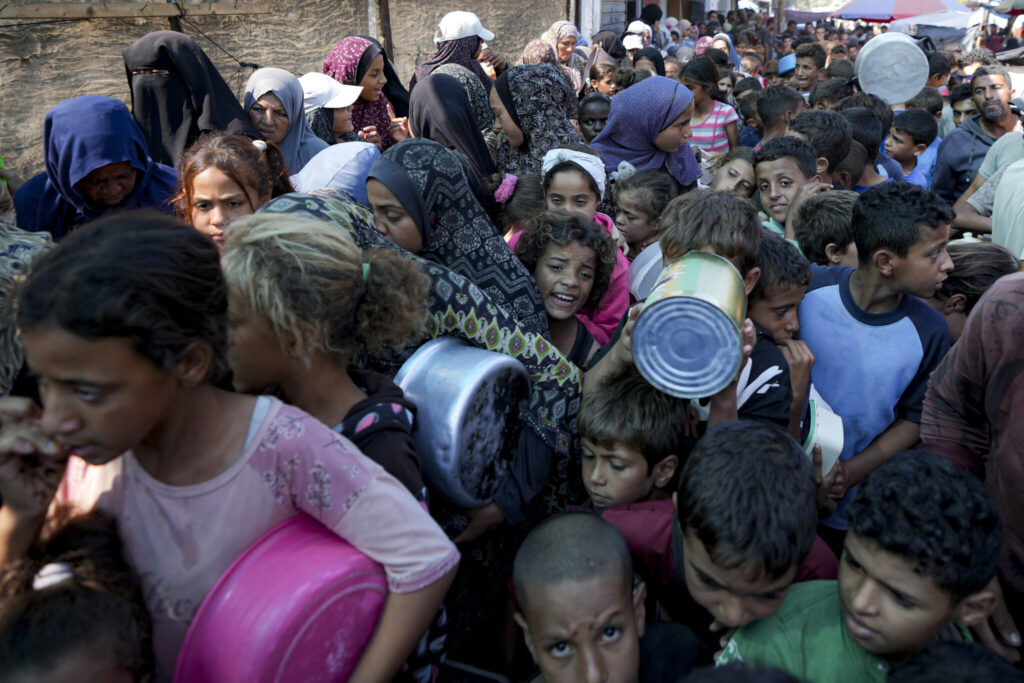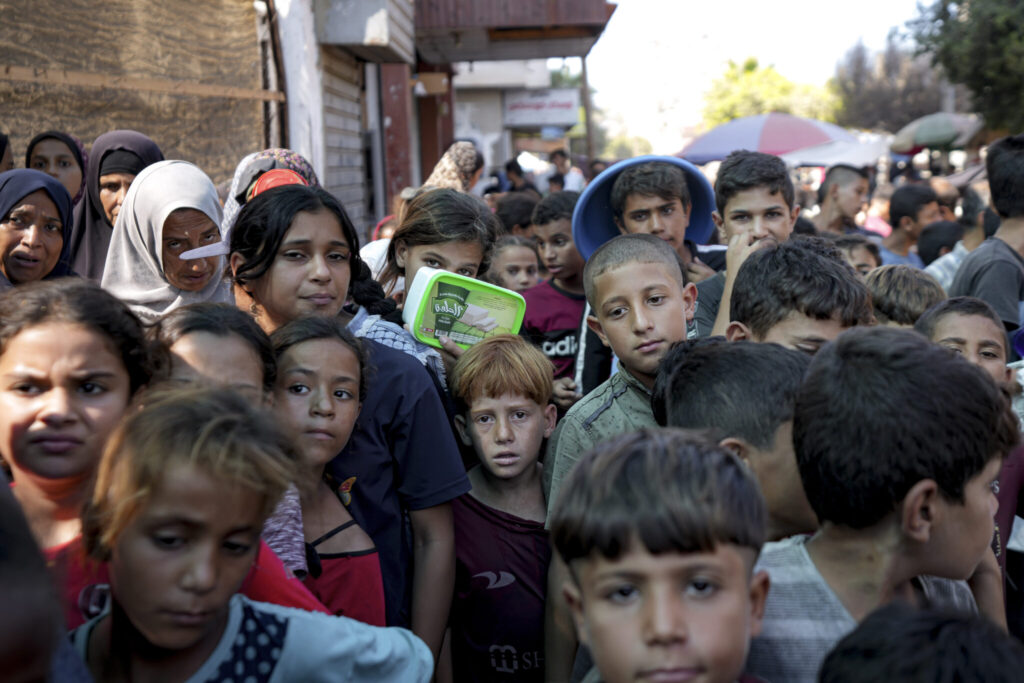Israel/ Gaza aid deadline/ U.S. humanitarian pressure/ Gaza crisis/ displaced civilians/ Newslooks/ WASHINGTON/ J. Mansour/ Morning Edition/ Israel has failed to meet the U.S. deadline to increase humanitarian aid access to Gaza, according to a report from multiple aid organizations. The Biden administration called for Israel to allow more aid into Gaza or risk a potential reduction in U.S. military support. Though Israel has made some efforts, aid levels and access remain insufficient, prompting concern from U.S. officials and humanitarian groups.

Israel’s Humanitarian Aid Shortfalls in Gaza: Quick Looks
- Missed Deadline: Israel has not met U.S.-set humanitarian aid targets for Gaza.
- U.S. Conditions: Required 350 trucks daily, a fifth crossing, and expanded shelter access.
- Report Findings: Aid groups report Israel complied with only four of 19 U.S. requests.
- Israeli Actions: Israel opened a fifth crossing but falls short on aid volumes.
- International Response: Biden administration is considering steps but has not yet acted.
Israel Misses U.S. Deadline for Increased Gaza Aid Access
Deep Look
Israel has fallen short of meeting the humanitarian aid requirements set by the U.S. government for the Gaza Strip, where living conditions are at their most dire point in the ongoing 13-month conflict, international aid organizations reported on Tuesday. Despite steps taken by Israel to increase aid access, aid levels remain critically low, and restrictions on movement for aid workers persist. The U.S. imposed a 30-day deadline, urging Israel to improve humanitarian aid or face potential limitations on U.S. military support amid Israel’s offensive actions against Hamas in Gaza and Hezbollah in Lebanon.
In October, the Biden administration sent a letter, signed by Secretary of State Antony Blinken and Defense Secretary Lloyd Austin, requesting Israel to undertake specific actions: increase daily aid trucks to at least 350, open a fifth border crossing, and allow civilians to move inland from coastal tent camps ahead of winter. However, eight major international aid organizations issued a report on Tuesday stating that Israel met only four out of 19 measures, failing to meet U.S. benchmarks for humanitarian support.
In response to the report, the Israeli military announced on Tuesday the opening of a new aid crossing near Deir al Balah in Gaza. While Israel has taken steps to increase aid flow, including this latest crossing, aid organizations report that deliveries still fall short of the minimum daily target. The latest Israeli data showed an average of 57 aid trucks entering Gaza per day in October, with numbers slightly rising to 81 in early November. The United Nations, however, estimates these figures lower, citing an average of just 37 daily trucks since October.
U.S. Pressure and Israeli Government’s Response
The Biden administration’s call for increased aid comes amid mounting pressure to address the deteriorating humanitarian situation in Gaza. Matthew Miller, a spokesperson for the U.S. State Department, acknowledged Israel’s partial efforts but emphasized that “more progress” was necessary to meet the U.S. aid conditions. However, Israel’s Foreign Minister, Gideon Saar, expressed confidence on Monday that the U.S. deadline would not significantly impact the situation.
Aid access and humanitarian conditions in Gaza have worsened in recent months, with food aid dropping sharply to 34,000 tons in October, less than half of the previous month’s levels. Ongoing conflict, stringent Israeli restrictions, and insecurity within Gaza have complicated the distribution of aid, with shortages frequently affecting civilians in northern Gaza, where Israel’s offensive is concentrated. Israel launched its intensified operation in northern Gaza last month, citing the presence of Hamas militants. The conflict has led to the deaths of hundreds of Palestinians and displaced tens of thousands, most of whom are living in tent camps in severe conditions.
Challenges in Aid Distribution
Humanitarian agencies working in Gaza report ongoing challenges in collecting and distributing aid, as well as frequent security threats from Hamas and criminal groups. Aid organizations, including the United Nations, report that up to 40% of delivered aid is sometimes stolen, contributing to the scarcity in distribution.
Israel’s government maintains that the limited October aid volume was due to border closures during the Jewish high holidays and observances marking the anniversary of Hamas’ October 2023 incursion into southern Israel, which triggered the conflict. An Israeli official stated that November’s deliveries were expected to rise, with around 50 trucks directed daily to northern Gaza and 150 trucks to the southern regions.
Steps Taken by Israel and Humanitarian Reactions
Israel has taken additional measures in recent days, including expanding a designated humanitarian zone on the coast to provide temporary shelter for hundreds of thousands of displaced Palestinians. The Israeli military announced that it had delivered supplies of food and water to the town of Beit Hanoun, one of the most heavily affected areas in Gaza. It has also implemented initiatives to support winter preparations, such as providing electricity for a desalination plant near Deir al Balah.
However, according to Tuesday’s report co-signed by eight international aid organizations—including Anera, Care, MedGlobal, Mercy Corps, and Save the Children—Israel’s actions fall significantly short of what is needed to address the growing crisis. The report states, “Israel not only failed to meet the U.S. criteria that would indicate support to the humanitarian response, but concurrently took actions that dramatically worsened the situation on the ground, particularly in northern Gaza.”
Rising Casualties and Widespread Displacement
The humanitarian crisis is compounded by the sheer scale of casualties and displacement in Gaza. According to local health officials, over 43,000 Palestinians have died since the conflict began, with women and children representing over half of these casualties. Approximately 90% of Gaza’s population is now displaced, and many live in sprawling tent camps with minimal access to food, water, and sanitation.
The current conflict traces back to October 2023, when Hamas-led militants attacked southern Israel, killing around 1,200 people and taking 250 hostages. Roughly 100 hostages remain in Gaza, with around one-third believed to have died.
International and U.S. Reactions
The Biden administration has maintained strong support for Israel during the conflict, providing billions in military aid and shielding Israel from global calls for a cease-fire. At the same time, the administration has urged Israel to meet humanitarian aid benchmarks, recognizing the urgent need for increased aid in Gaza. Although aid levels temporarily improved last spring under U.S. pressure after an incident involving the deaths of seven aid workers, the volume has since diminished.
Former U.S. State Department official Charles Blaha, who oversaw military support compliance, predicted that the Biden administration might acknowledge Israel’s limitations on aid to Gaza. However, Blaha suggested that the administration could ultimately cite “national security interests” to avoid triggering restrictions on military support.
Meanwhile, Israeli President Isaac Herzog, whose role is mainly ceremonial, is scheduled to meet with President Joe Biden on Tuesday. The recent reelection of Donald Trump, a vocal supporter of Israel during his first term, could also influence the U.S.-Israel dynamic, as Trump has promised to end ongoing wars in the Middle East without detailing specific strategies.
Outlook for Gaza Aid
Humanitarian organizations are urging the international community to continue pressuring Israel for more aid access to Gaza. Despite recent incremental improvements, aid levels remain well below the minimum necessary to avert a worsening humanitarian disaster. Both the U.S. and international groups are monitoring the situation closely as winter approaches, and displaced Palestinians face increasingly harsh conditions in the absence of essential resources.







